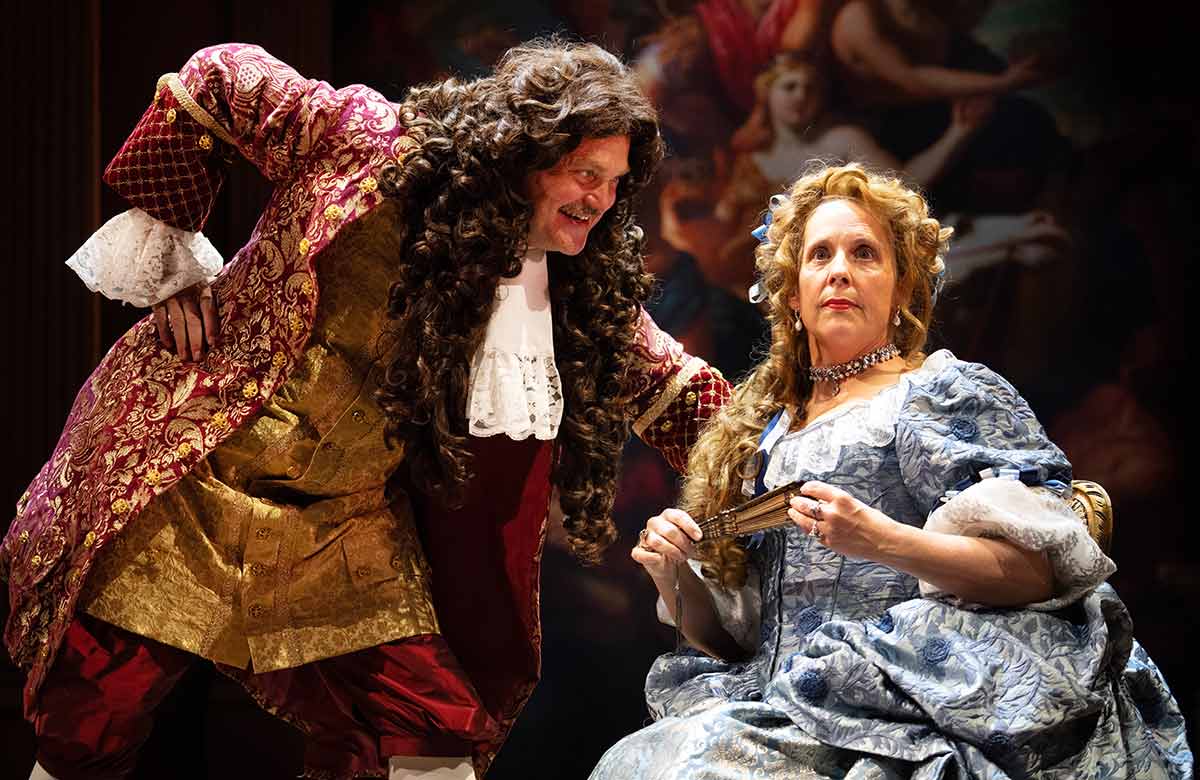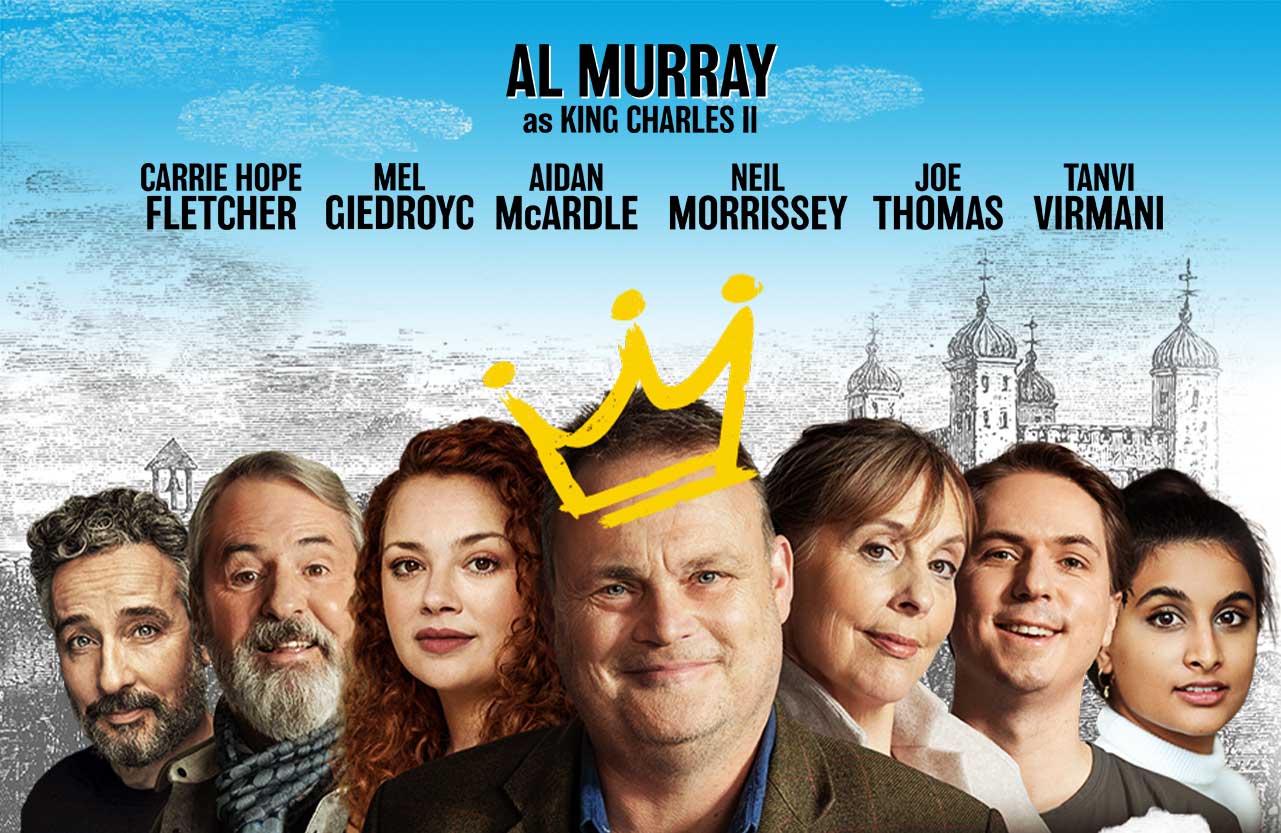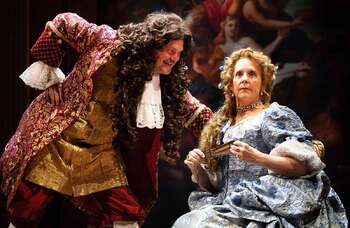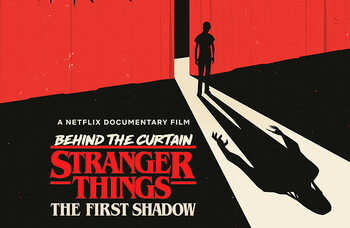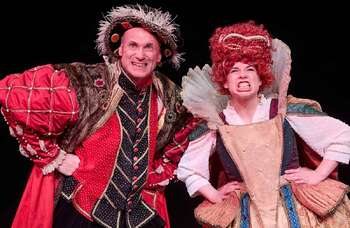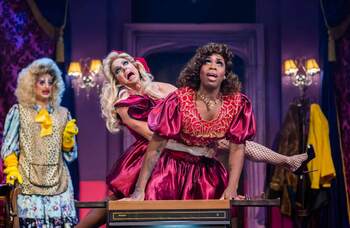The Crown Jewels starring Al Murray – review round-up
In 1671, a mad Irishman called Colonel Blood attempted to steal the Crown Jewels from the cupboard where they were kept at the Tower of London. He was caught almost immediately, brought in before King Charles II, and – bewilderingly – pardoned and promoted, instead of punished.
This odd episode is retold in new West End comedy The Crown Jewels, which runs at the Garrick Theatre until mid-September, having had its press night pushed back by a week. It marks the playwriting debut of screenwriter Simon Nye, who is best known for creating the 1990s sitcom Men Behaving Badly.
The Crown Jewels is directed by Sean Foley – writer, comedian, and artistic director of Birmingham Rep – and features a cast of familiar faces, including Al Murray as King Charles II and Aidan McArdle as Colonel Blood, plus Mel Giedroyc, Carrie Hope Fletcher, Joe Thomas and Neil Morrissey.
Does this all-star ensemble entertain the critics? Do Nye and Foley locate the laughs in this ludicrous story? Is The Crown Jewels a hilarious history lesson?
Fergus Morgan rounds up the reviews...
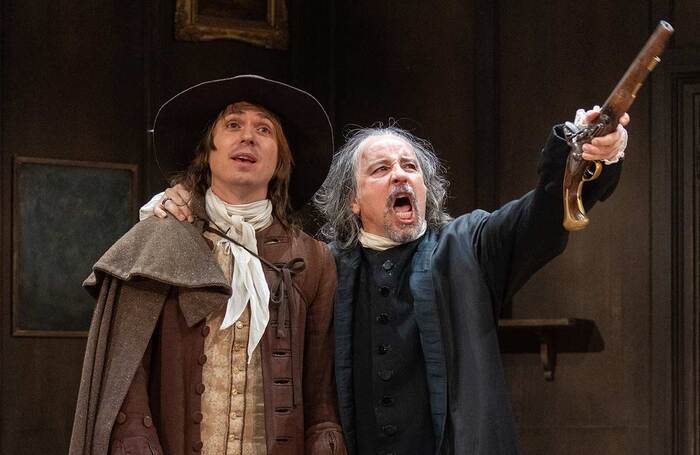
The Crown Jewels – plodding play
Nye’s first play follows some extraordinary events that took place in 1671, when Colonel Thomas Blood attempted to steal the crown jewels. It is billed as a riotous modern take on a Restoration comedy, but does it have the reviewers rolling in the aisles?
No, it definitely does not. The Crown Jewels is “pedestrian” for Gary Naylor (TheArtsDesk, ★★), “meandering” for Adam Bloodworth (CityAM, ★★), “plodding” for Marianka Swain (LondonTheatre, ★★★), and “woeful” for Clive Davis (Times, ★★). “Imagine the weakest episode of Blackadder crossed with Horrible Histories on an off-day and a woefully under-rehearsed panto,” writes Nick Curtis (Evening Standard, ★). “Now you have a rough idea of this shabby comedy.”
It is “a fantastic premise for a play”, writes Tim Bano (The Stage, ★★), but “Nye manages to turn this eccentric moment in British history into a bafflingly limp history lesson disguised as a comedy”. Agreed, writes Isobel Lewis (Independent, ★★). His play “somehow manages to be tame, obvious and impenetrable at the same time” and “moments of humour are few and far between”.
“There are two unforgivable crimes in this 17th-century heist caper,” writes Arifa Akbar (Guardian, ★). “The first is that it manages to make an intriguing and little-known historical incident bland. The second is that it enlists some of the cream of British comedy and none of them manages to find a funny line between them.” The jokes are “puerile”, she complains, and the songs are “lame".
The Crown Jewels – masterly Murray
Nye’s script may not set the audience on fire, then, but what about the starry cast of comic actors? Murray is best known for his stand-up shows, which he performs in his Pub Landlord persona. Here, in his West End debut, he takes on the regal role of King Charles II.
And Murray is, according to many critics, the best thing about the show. He is the “one comic jewel” in the show’s crown, according to Dominic Cavendish (Telegraph, ★★★). “Murray successfully applies the commanding presence and ad-libbing elan he has perfected as the Pub Landlord to the role of Charles,” Cavendish continues. “With flowing wig and strangulated accent, he flirts with women in the audience, enjoyably snarls at those who fail to show due deference, and lobs in barbs about foreigners with practised mischief.” Agreed, writes Naylor. He is the show’s “saving grace”.
There is also plenty of praise for comedian and actor Giedroyc, familiar to millions for her stint as the presenter of The Great British Bake-Off. Here, she multi-roles as the wife of the 77-year-old guardian of the Crown Jewels and a French courtier in the court of King Charles. Giedroyc is “exquisite” according to Curtis, “sublimely preposterous” according to Lewis, and “one of the show’s high points” according to Bano.
There is little praise for the rest of the cast, though, which includes screen stars Neil Morrissey and Aidan McArdle, The Inbetweeners’ Joe Thomas, and musical theatre performer Carrie Hope Fletcher. They all “shout very loudly” and “wolf the scenery”, writes Bano. “Yet try as they might – and, boy, do they try – they can’t find enough laughs.”
Continues...
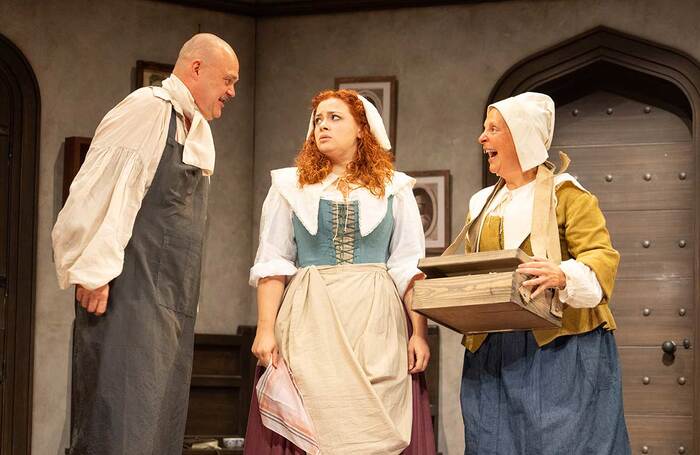
The Crown Jewels – sluggish staging
Murray and Giedroyc salvage something from Nye’s script, then, but what about the show’s direction and design? Foley is no stranger to silliness: his long career in comedy has included the multi-award-winning West End shows The Play What I Wrote and The Ladykillers.
Here, though, he fails to impress the press. His staging is “underpowered” according to Bloodworth, “half-formed” according to Curtis, and “lost” according to Bano. “The pacing is far too sluggish, and the over-reliance on knob gags gets tiresome,” writes Swain. “It’s also hard to figure out the tone: it’s generally quite cartoonish, but with sudden dashes of sex and violence.”
And the design? Michael Taylor has supplied set and costumes: do the critics at least have something nice to look at? “It’s colourful,” admits Julia Rank (WhatsOnStage, ★★). “The costumes are good, as is the revolving set that conveys the different locations. But what a waste this show is.”
“The vestigial sets, the non-existent pacing, the arch performances – everything here exudes a knowing, can’t-be-arsed crapness,” comments Curtis. Agreed, adds Akbar. “It looks conceptually dashed-off, with sub-pantomime-grade characters” and is “a woefully tedious evening”.
The Crown Jewels – the verdict
Ouch. Reviews this bad are rare. Nye’s first play is an attempt to realise an extraordinary historical episode as a Restoration comedy, but it falls flat on its face. The jokes are not funny, the story is slack, and the direction is dull. Its only saving graces are stars Murray and Giedroyc.
Foley’s production has earned three-star reviews from Cavendish in the Telegraph and Swain for London Theatre, but most critics award only two, and there are particularly awful one-star write-ups from Akbar in the Guardian and Curtis in the Evening Standard.
Most Read
Across The Stage this weekYour subscription helps ensure our journalism can continue
Invest in The Stage today with a subscription starting at just £7.99
